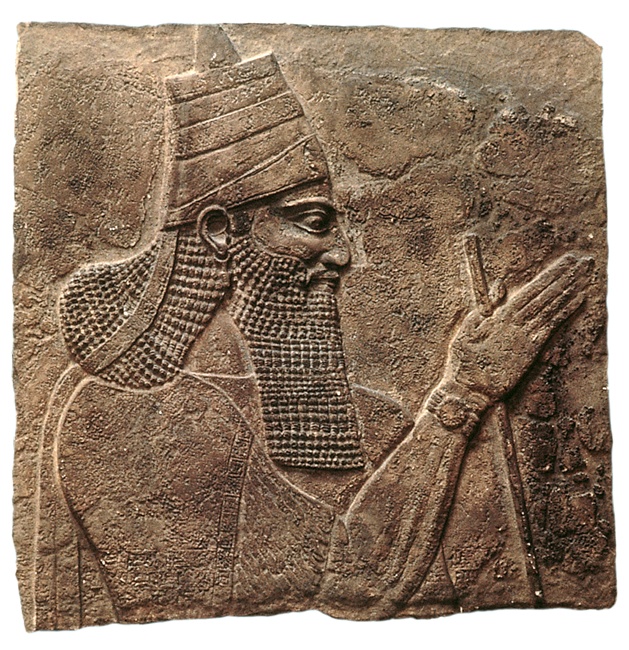Does Archaeology Confirm the Existence of Specific People Mentioned in the Bible?

On virtually every page of the Bible you will find the name of a person or place.
Since the Bible claims to be real history, its credibility rests on its historical accuracy. If the people, places and events mentioned in the Bible are part of factual accounts, we should expect to find evidence to support those accounts. So what does the evidence show? Do archaeology and history confirm the Bible or disprove it?
As archaeologists have excavated the ancient lands of the Bible, they have uncovered inscriptions and other evidence that prove the existence of dozens of persons mentioned in the Bible. Historians poring over ancient records have found still more.
Among biblical figures whose existence has been attested by archaeology or other preserved ancient records are the following:
Old Testament
Ahab, king of Israel
Ahaz (Jehoahaz), king of Judah
Artaxerxes, king of Persia
Ashurbanipal, king of Assyria
Azaliah, scribe
Azariah, grandfather of Ezra
Baruch, scribe of the prophet Jeremiah
Balaam, Moabite prophet
Belshazzar, coregent of Babylon
Benhadad, king of Aram
Cyrus II, king of Persia
Darius I, king of Persia
David, king of Israel
Esarhaddon, king of Assyria
Evil-merodach, king of Babylon
Gedaliah, governor of Judah
Gemariah, scribe
Geshem, Nabatean dignitary
Hazael, king of Aram
Hezekiah, king of Judah
Hilkiah, high priest
Hophra (Apries), pharaoh of Egypt
Hoshea, king of Israel
Jehoiachin, king of Judah
Jehu, king of Israel
Jehucal (Jucal), court official
Jerahmeel, prince of Judah
Jezebel, wife of king Ahab of Israel
Johanan, grandson of the high priest Eliashib
Josiah, king of Judah
Jotham, king of Judah
Manasseh, king of Judah
Menahem, king of Israel
Merodach-baladan, king of Babylon
Mesha, king of Moab
Meshullam, father of Azaliah the scribe
Nebo-Sarsekim, Babylonian official
Nebuchadnezzar II, king of Babylon
Necho II, pharaoh of Egypt
Nergal-sharezer, king of Babylon
Neriah, father of Baruch the scribe
Omri, king of Israel
Pekah, king of Israel
Rezin, king of Aram
Sanballat, governor of Samaria
Sargon II, king of Assyria
Sennacherib, king of Assyria
Seraiah, court official of Zedekiah
Shalmaneser III, king of Assyria
Shalmaneser V, king of Assyria
Shaphan, father of Gemariah the scribe
Sharezer, son of Sennacherib
Shebna, royal steward of Hezekiah
Shelemiah, father of Jehucal (Jucal)
Shishak, pharaoh of Egypt
Tiglath-Pileser III, king of Assyria
Uzziah, king of Judah
Taharqa (Tirhakah), pharaoh of Egypt
Xerxes I, king of Persia
Zedekiah, king of Judah
New Testament
Annas, high priest
Aretas IV, king of Nabateans
Augustus Caesar, emperor of Rome
Caiaphas, high priest
Claudius Caesar, emperor of Rome
Erastus, public official in Corinth
Gallio, proconsul of Achaia
Herod the Great
Herod Antipas
Herod Agrippa I
Herod Agrippa II
James, half-brother of Jesus
Jesus Christ
John the Baptist
Nero Caesar, emperor of Rome
Pontius Pilate, procurator of Judea
Quirinius, governor of Syria
Sergius Paulus, proconsul of Cyprus
Tiberius Caesar, emperor of Rome
The list of confirmed biblical figures is detailed and extensive. A major difficulty that has long faced the Bible's critics is its many mentions of seemingly insignificant names. At times entire lists that aren't functional to the narrative are inserted here and there.
Some critics have argued that the biblical books were written much later and that such names were added to make the accounts merely appear authentic. Others have suggested that people important to stories of later times were surreptitiously inserted into earlier accounts or that the inserted names serve a poetic function.
How, then, can they explain biblical figures whose existence has been proven by archaeological finds placing them in the exact times and locations in which they are described in the Bible? And, as seen from this list, this has happened dozens and dozens of times with persons ranging from kings to court officials to commoners!
There are limits, of course, to what archaeology can confirm about the Bible. But archaeology has verified not just the existence of dozens of people mentioned in Scripture, but hundreds of details such as cities, towns and even specific structures mentioned in the Bible such as palaces, pools and city gates. Again and again as archaeologists have excavated the lands of the Bible, the evidence they've uncovered has verified that the Bible is a truly authentic and accurate ancient record.
As the great archaeologist William F. Albright wrote, "There can be no doubt that archaeology has confirmed the substantial historicity of Old Testament tradition" (Archaeology and the Religions of Israel, 1969, p. 169).
He also stated: "The excessive skepticism shown toward the Bible by important historical schools of the eighteenth and nineteenth centuries has been progressively discredited. Discovery after discovery has established the accuracy of innumerable details, and has brought increased recognition to the value of the Bible as a source of history" (The Archaeology of Palestine, 1960, pp. 127-128).
